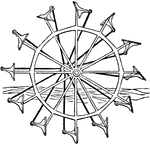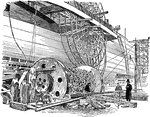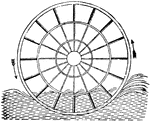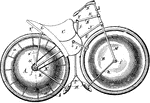Clipart tagged: ‘Paddle Wheel’

Feathered Paddle-wheel
"Elijah Galloway patented, in 1829, the Feathered Paddle-wheel, in which the floats are mounted on axes,…

Great Eastern
"A midship view of the Great Eastern, showing one of the paddle-wheels and the launching gear." -Gordy,…

Ordinary Paddle-wheel
"The usual form of paddle-wheel, that is called the radial, in which the floats are fixed. It will be…

Marine Velocipede
A marine velocipede is a form of waterborne transport, primarily for recreational use, powered through…